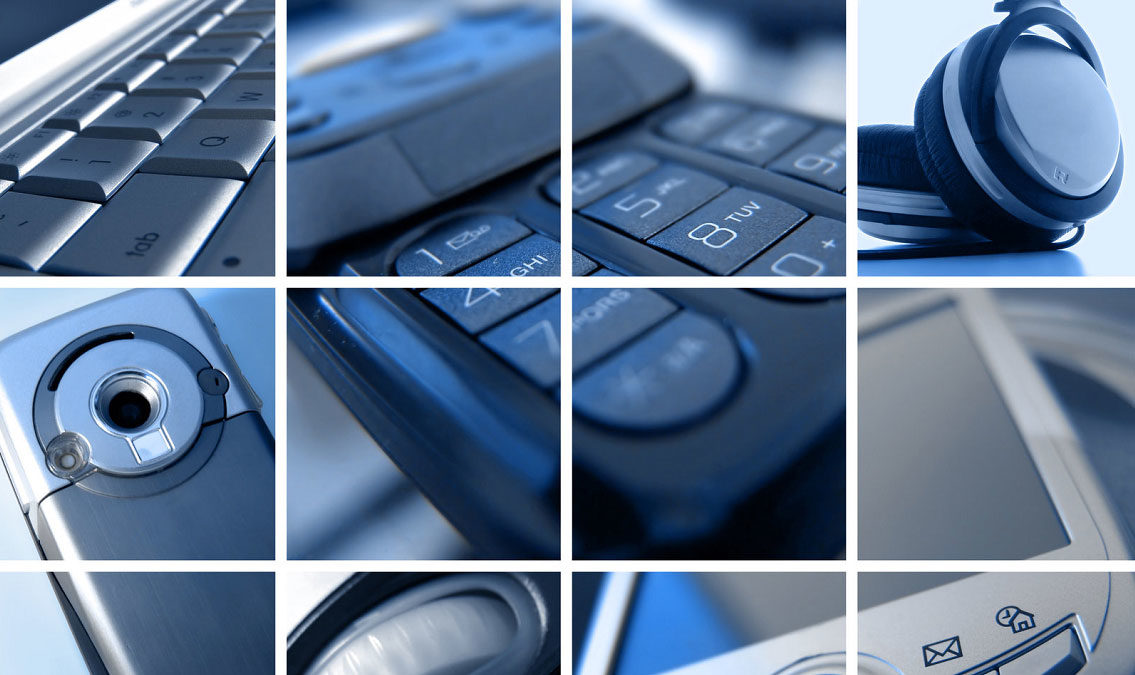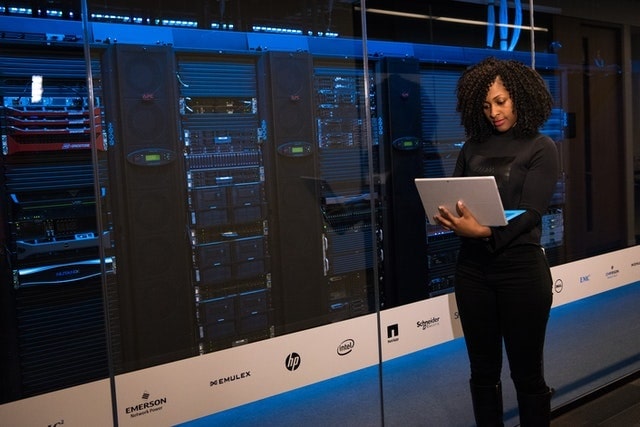50 Best Practices in IT Asset Management


IT Asset Management (ITAM) requires the careful construction of business processes that enable the identification, tracking, and management of IT-related assets for an organization. In order to maintain the right amount of control over all assets, it is important for a company to consider exactly how they will implement any ITAM tools.
With regulatory, safety, and security considerations that vary across industries and businesses, these decisions are crucial.
With the global ITAM market expected to double by 2026 and reach a market size of over $2 billion, there is a tremendous amount of interest in these technologies and systems. A properly developed IT asset management program will require the participation of an entire workforce in order to be successful.
Maintaining accurate records, implementing asset tags (such as foil asset labels, rigid Metalphoto® asset tags, and tamper-evident and destructible vinyl asset tags to deter theft), and following preventive maintenance plans are only a few of the many steps required along the way.
In this post, we have gathered 50 ITAM best practices that can help you develop a robust IT asset management plan for your operation. This list focuses on hardware considerations and how to best leverage a software platform and an engaged workforce to monitor and track critical assets.
We hope you find some great ideas and concepts that can improve upon your existing approach to ITAM and find new ways to minimize costs and maximize productivity.

1. Properly inventory your IT components. “Now, break that framework down into its individual IT components and how they relate to your purpose, strategy, and vision. Create an IT components inventory, where you compare what you want IT to do against what IT is already doing. Create this inventory as a high-level view of what IT provides, similar to what you’d see on an org chart. You’re looking for functional areas that define your IT organization.” – Joe Hertvik, Organizational Change Management (OCM): A Template for Reorganizing IT Around Your Vision, BMC; Twitter: @bmcsoftware
2. Eliminate ghost and zombie assets. “Ghost assets are either they are missing/stolen or those assets which are mentioned in your books. But physically they are not available. Zombie assets are physically there but not mentioned in the books. They occurred because of non-efficient asset management practice & both effect in taxation. Why ghost asset is a problem? Because you are paying taxes for an asset which you are not using.” – 7 Best Asset Management Practices for Your Business, AssetInfinity; Twitter: @assetinfinity
3. Properly inventory “Bring Your Own Device” assets. “The third step is to ensure that your mobile assets are tracked as well. Initially, you may not have a Bring Your Own Device ITAM policy in place, but you can always start by asking users to register their personal devices for MDM tracking. These personal devices are on and off the home network, and therefore require dynamic asset discovery techniques.” – IT asset management best practices, ManageEngine; Twitter: @manageengine
4. Know when to upgrade obsolete assets. “Not knowing what assets are available to your employees can have a negative impact on their work. Obsolete equipment on the network could be causing slowdowns for critical business apps, or otherwise negatively influencing user experience. Tracking asset lifecycles and finding ways to safely upgrade or replace them can help improve productivity.” – Eric Dosal, What is IT Asset Management (ITAM) & Why is It Important?, Compuquip; Twitter: @compuquip
5. Use an automated asset discovery process. “Using an automated asset discovery and management functionality, along with server and application monitoring tool will allow an organization to see the computer inventory details, all while actually troubleshooting a server crash or application performance issue. Detection of an employee’s unauthorized and non-compliant use of hardware or software on their enterprise workstation, can also be assessed.” – What is IT Asset Management – Best Practices, DataVista; Twitter: @datavista_inc
6. Consider automated asset detection tools. “This data is stored in a central repository, the logistics of which aren’t always practical given the size of organizations’ technology stacks today. That’s why third-party ITAM software and applications can be beneficial for many companies. These tools automatically detect hardware, software, and network assets, while gathering and storing data so businesses can make smart decisions and optimize their ROI.” – What is IT asset management?, Workflow; Twitter: @ServiceNow
7. Use both automated and physical inventory tools. “Both automated discovery and physical inventory tools like bar code scanning are required to ensure continuous management of assets through both operational and non-operational portions of the life cycle. Without physical inventory capabilities, it is impossible to support certain IT asset management processes and best practices, such as receiving and rolling (physical) inventory.” – IT Asset Management: It’s All About Process, Provance & Gartner. Twitter: @Provance
8. Adopt strategic inventory planning practices. “When you keep track of what inventory you have in your IT infrastructure, it becomes easier to plan for future spending on assets. Without knowing what currently exists in your end-user systems – both hardware and software – it is very difficult to plan a procurement budget. You may actually end up procuring more assets, and those that are not required. Centralized and streamlined asset management lets you scan your entire network and list which hardware and software your system is using.” – Vinod Mohan, IT Asset Management Benefits & Best Practices, Solarwinds; Twitter: @solarwinds
9. Don’t forget about IT asset disposition. “IT asset disposition (ITAD) is a business built around the safe and ecologically responsible disposal of obsolete, out-dated or unwanted IT products. Often overlooked even by organizations with robust IT departments, ITAD can be one of the strongest value drivers associated with IT asset management, as it allows organizations to recoup significant costs when disposing of IT equipment that is no longer needed. Organizations can leverage their IT asset management system to maintain records of use for various IT equipment, determining when equipment needs to be replaced.” – Mike Bollman, IT Asset Management 101, Cherwell; Twitter: @Cherwell
10. Maintain a centralized inventory. “Assessing your IT department is the first step towards a solid ITAM process. Analyze and record your assets to create an organized inventory. Consider all aspects of IT including data centers, computers, cloud assets, and networks to create a big-picture understanding of your available resources. With IT asset management software, you can easily track your current inventory and add new products or information as they are acquired.” – 5 Benefits of IT Asset Management and Best Practices for your Business, Nearshore Technology; Twitter: @nearshore_tech
11. Integrate compliance and governance with ITAM. “In the past, IT asset managers were seen more as inventory control managers, but that old approach has dramatically been transformed over the years to now encompass contractual obligations including compliance and governance, financial obligations such as return on investment (ROI) and total cost of ownership (TCO), and inventory processes including controls, accounting practices, securing brands and intellectual property issues.” – Todd R. Weiss, Best practices for IT asset management during a pandemic, Cybersecurity Asset Management; Twitter: @AxoniusInc
12. Create a formal asset retirement process. “Depending on your country there are a number of money making, legal ways to dispose of old hardware. There are organizations that will buy the old hardware from the organisation, and then sell them on as ‘refurbished’. There are also recycling companies, charity organizations and schools that the organization can donate their old hardware to. It is important to remember that you need to wipe any data from the hardware before the disposal of the asset. This needs to be part of the retirement process.” – David Foxen, The Importance of Effective HAM (Hardware Asset Management), The ITAM Review; Twitter: @itamreview

13. Avoid shadow IT practices among staff. “More and more often, applications, licenses, and other IT assets are being purchased, managed, and used in “the shadows,” without the knowledge of the central IT team. Software that makes collaboration easier can keep IT in the loop, enabling other teams to be more productive, and avoiding risk and unnecessary costs.” – What is IT asset management (ITAM)?, Atlassian; Twitter: @atlassian
14. Optimize individual asset usage. “Hardware asset management focuses on getting the most out of an organization’s assets by using idle or underused assets. Use the software to keep an accurate track of your inventory so you don’t overspend. Conversely, get timely alerts when inventory reaches a low order threshold. Creating standards by utilizing such information enables companies to buy only what is necessary and avoid shelving hardware assets.” – 6 Ways Hardware Asset Management Software Benefits your Business, AssetSonar; Twitter: @assetsonar
15. Establish clear governance policies. “We want to believe we have solid processes in place, but our IT organizational structure doesn’t empower any one group within IT to establish a solid process. Having a robust focus on good governance would fix these issues. Senior managers need to recognize that processes fail without governance. Establishing specific goals for the program that include defining and managing scope. Leadership and business changes will impact scope and priority. We have to revisit goals, policies, and processes when business priorities shift.” – Patricia Adams, IT Asset Management Best Practices to Help You Sleep at Night, Ivanti; Twitter: @GoIvanti
16. Manage the end user experience. “Often, assets may be refreshed simply because users ask for replacements, since no one is tracking how long they have been in use. Alternately, assets are used until they break, or user frustration mounts due to app performance times and limited storage on older models. Having an automated system in place – with set refresh dates and one that captures IT service tickets and requests– will flag performance issues and provide a more productive user experience.” – Ian Aitchison, What are some effective IT asset management strategies?, MobiChord; Twitter: @MobiChord
17. Foster collaboration among employees. “Empower your employees. Shared assets can be utilized more effectively through collaborative feedback and insights. Moreover, employees can provide helpful insights into subject matter related to asset management. This includes references to product safety, skills development, and other knowledge base materials that are updatable and referenceable by employees.” – Benefits of IT Asset Management – A good idea for businesses, EZOfficeInventory; Twitter: @OfficeInventory
18. Empower employees to use ITAM information. “Faced with an overwhelming volume of critical decisions that need to be made almost immediately, leaders feel the urge to limit authority and tighten controls. However, empowering the right teams and leveraging the information contained in your IT Asset Management system is a better approach. Our world is still changing at an incredibly fast pace, so you and your plans need to be flexible and your decisions need to be based on timely and accurate information.” – Position Your Company for Global Resilience, SunView; Twitter: @sunviewsoftware
19. Consider the impacts of remote working. “Moving forward, everything will be measured differently because employees are at home. Their satisfaction level with their IT department will be how easy it is for them to get the hardware and assets they need delivered to them. Companies need to re-think operations and the value they’re looking to get out of their IT and digital systems.” – Hardware Asset Management in the Work-from-home Environment, AMI; Twitter: @AMITracks
20. Keep employees informed of updates. “An efficient asset management process also ensures you can comply with regulations related to equipment and property asset management, as well as respond to any audit requirements. Additionally, by alerting your team to upcoming needs (such as software updates, periodic routine maintenance, or devices reaching their end-of-life), you can proactively advise actions for decision-makers, thus increasing your company’s efficiency.” – How to Demonstrate the Value of IT Asset Management, SolarWinds; Twitter: @SolarWinds
21. Consider regulatory and security needs. “Most employees working in an office setting have company-supplied desktops, and enterprises are increasingly supplied with mobile IT such as smartphones and tablets. An IT asset management solution helps deter theft and unwanted transfer, streamlines the coordination of maintenance, and allows for quick replacements when assets fail. Certain businesses and even IT companies providing third-party services to highly-regulated industries may be required to have an IT asset tracking solution that meets minimum standards.” – Asset Tracking: Custom Systems and Solutions to Monitor and Track Assets across a Range of Industries, Camcode; Twitter: @camcode
22. Gather continuous feedback. “Your ITAM process isn’t static. Seek to continually improve upon and refine your process. Keep open communication with your designated ITAM team. Solicit their feedback about how things are going and what they need from you to operate more effectively. Solicit feedback from employees outside of the ITAM team and ask them how they perceive the program to be operating.” – Successful IT Asset Management: 5 Best Practices, Tech Dump; Twitter: @TechDumpMN

23. Keep important information for each asset. “The information stored against each hardware asset must at least ensure that the asset can be uniquely identified. In order to optimize hardware assets, IT administrators need to keep additional information in regards to warranty, support contracts, maintenance, and other variables. Hardware asset management also needs to include data to support SAM.” – How to Effectively Manage Your IT Inventory, Comparesoft; Twitter: @comparesoft
24. Track the entire lifecycle of IT assets. “One of the main processes of IT Asset Management is tracking the complete lifecycle of your assets. This includes employee requests for a new asset, management approval, procurement, provisioning, recycling, and retirement. An ITAM strategy helps establish the proper procedures for these processes to unfold smoothly. Managing every part of the asset lifecycle assist IT with providing employees with a quality service and keeps them informed to make the right decisions.” – What are IT Asset Management Processes?, Vizor; Twitter: @VIZOR_cloud
25. Understand the true cost of each asset. “Every asset has a cost, and money is the language of business. Integrate ITAM with IT financial management to earn more respect from the rest of your business. You will be able to communicate costs on a regular basis through showback or chargeback invoices and use financial management for managing demand and driving a cost-conscious culture.” – Brian Hollandsworth, 10 tips on how to win the IT asset management challenge, Network World; Twitter: @networkworld
26. Standardize your definition of IT assets. “Non-standard IT equipment and software can cost an organization a lot of money. It causes IT staff to be less productive because they lack expertise managing the non-standard assets so each issue results in a learning process. Applying standards to IT assets not only makes IT staff more productive, users are also more productive interacting with systems and data that they are familiar with.” – What is IT Asset Management?, Freshworks; Twitter: @freshserviceapp
27. Account for and minimize lost hardware. “Other costs included detection, forensics, lost productivity, lost intellectual property, data breach, and legal, consulting and regulatory expenses. Almost half (46 percent) of the missing laptops contained confidential data. The number of missing laptops and the associated costs are likely higher today than they were a decade ago. The problem is compounded by record numbers of employees working from home using a growing array of devices.” – The Critical Role of IT Asset Management in a Work-from-Home World, Technologent; Twitter: @technologent
28. Start with a subset of assets. “Starting out with a smaller subset gives you a chance to select the assets with the biggest impact, ex. workstations. But targeting workstations, you can put those processes in step one into action and see how they work. You can develop a better working relationship with the support team and the service desk around the “What to do if” situations. Once all the kinks are worked out, you can start managing the next subset of assets on your list. The next batch will go more smoothly, and you’ll be able to spin up the management of those assets faster.” – Yvette Mathews, Tips for Effective IT Asset Management, ITS; Twitter: @ITS_Partners
29. Use barcodes to improve asset allocation. “Along with the check-in/check-out system, a barcode scanner has the ability to automatically suggest the asset location based on the new user’s role, position, or department. For example, Demi from HR needs to borrow a laptop for three days. Based on her department, the check-out workflow suggests asset location Room 305, which is HR’s location. As a result, you always know who has what and where it is. Keeping track of asset location ensures organizations maintain control over their loaning program.” – Increase IT Asset Management Efficiency With Barcode Scanners, Vizor; Twitter: @VIZOR_cloud
30. Select important metrics to track. “In addition to general information such as vendors, network configuration data, locations, user info, licensing, purchase & disposal info, and financial information, key metrics tied to your objectives should be identified for reporting. For instance, if the goal is to improve purchase decisions, track metrics such as asset depreciation rate, average maintenance cost and average lease violation fines paid.” – Farida Ali, 7 BEST PRACTICES FOR IT ASSET MANAGEMENT (ITAM), Dynamic; Twitter: @DynamicFutureIT
31. Decide if IT assets should be managed or unmanaged. “According to the risks that are associated with them, IT assets should be classified as managed or unmanaged. The first category should include laptops, desktop, mobile devices, servers. These ones should be checked-in on a daily basis. The unmanaged category should include IT assets that do not contain sensitive data – hubs, monitors, printers.” – Elena Georgescu, IT Asset Management Best Practices: An Overview, Heimdal Security; Twitter: @HeimdalSecurity
32. Understand the condition of each asset. “Be aware of asset condition by tracking the metrics that matter most. These metrics won’t just track basic information; they’ll track key data tied to business objectives. If you have a good understanding of asset condition, you’re more prepared for audits and any other unexpected challenges that might come up over the asset lifecycle. This leads to improvement in service to end-users, compliance, and spending on purchasing and managing assets.” – IT Asset Management (ITAM) Best Practices Guide, Crossfuse; Twitter: @crossfuze
33. Use both barcodes and RFID for asset tagging. “While the serial number is a key data point for all assets, it should not be used as the standard data point for tracking and reporting purposes in isolation. Barcoding is the preferred route. This allows for a consistent, key identifier for all assets in a standard format. Bar coding also allows for a more controlled inventory. Tags can be tracked and assets visually confirmed as well as being captured within the inventory. RFID asset tags are becoming more standard in the datacentre and server environment, and also with other assets that organizations don’t want to leave the premises. Overall, having an RFID and Barcoded asset tagging solution will bring greater management and security to hardware assets.” – David Foxen, Quick guide to Hardware Asset Tagging, The ITAM Review; Twitter: @itamreview
34. Use structured documentation. “There’s more to IT asset management than just writing stuff down. That sort of flat documentation doesn’t really add a ton of value. Structured documentation does, because it enables you to link things together in meaningful ways. So you know which user has which hardware, which software and which passwords. Flat documentation can tell you that your client has ten computers. Structured documentation tells you which user has which computer, what that computer is connected to, and what they use it for. Being able to flow seamlessly through different asset types allows you to get actual value from the documentation you’re using.” – IT Asset Management Best Practices, IT Glue; Twitter: @itglue
35. Identify underused IT assets. “Underused IT assets lead to wasted time and money, preventing the most efficient flow of work and critical processes. And with all the complex multi-cloud environments, cybersecurity threats and compliance requirements to address, organizations are realizing that ITAM is now a business necessity. To reap the many benefits of ITAM, organizations should carefully vet Asset Management offerings to ensure that they contain the key elements for successful IT asset management.” – Dr. Akhil Sahai, How better asset management can take your business to the next level, ITProPortal; Twitter: @ITProPortal

36. Streamline hardware and software. “When managing your assets, you’ll need to have both the correct hardware and software, and you’ll need to ensure the two are well-integrated. They should work well in tandem without any compatibility issues. Your hardware is just as important as the software component within your asset management system.” – 5 Asset Management Best Practices, Wasp; Twitter: @waspbarcode
37. Plan ahead for maintenance needs. “While it’s nice to think that technology will just work the way it should all the time, that’s not practical or realistic. You should plan for maintenance—both regularly scheduled maintenance and unexpected maintenance. That could mean having one or two laptops on hand as ready-to-go replacements, or it might be as simple as having a plan for what employees should do if their tech equipment keeps them from routine tasks for a while.” – The quick guide to hardware asset management, RedNight Consulting; Twitter: @RedNightConsult
38. Protect your assets from theft. “The theft of fixed assets is a multifaceted security challenge that different types of organizations have to confront day to day. From medical devices in hospitals and computers in schools or business premises to bulldozers on construction sites and inventories in warehouses—there is the need to implement technical, physical, and logical antitheft measures to prevent the loss of expensive and business-critical tools.” – 7 Ways to Protect Fixed Assets Against Theft, GoCodes; Twitter:@gokodes
39. Conduct audits to avoid compliance penalties. “More than likely, companies that face penalty fees don’t intend to operate their IT assets outside of compliance, but the consequences are the same regardless of intent. To ensure compliance and avoid costly vendor penalties, IT Asset Managers should conduct regular internal audits to get out front of compliance risks. – Lauren Suggett, The Role of Compliance in IT Asset Management, Nitro Software
40. Review ISO standards for IT asset management. “The International Standards Organization (ISO) maintains the officially recognized standards for IT asset management. Before addressing your IT assets, examine the ISO standards, and consider the processes and IT software tools to put into place. This upfront planning is worth the effort. A successful IT asset management implementation helps you make the most of your organization’s technology adoption and growth.” – Robert Izquierdo, A Beginner’s Guide to IT Asset Management, The Blueprint
41. Consider using a configuration management database (CMBD). “Do you have a CMDB? It’s not necessary for all organizations, but it can be a useful way to:
Be thoughtful about what data you choose to feed the CMDB. While it can be an important single source of truth, it doesn’t need to contain every piece of data you have. Only include what adds value.” – Kirstie Magowan, 7 Tips for Efficient IT Hardware Inventory Management, BMC; Twitter: @bmcsoftware
42. Govern the entire IT asset management process. “You constantly face mounting pressure to forecast and budget IT resources, cut costs, and improve departmental efficiency. To be successful, you need to control the entire asset management process, budget and risks against the desired performance of the assets. Your best shot at being efficient is to centralize this activity using a cross-functional team.” – Norm Brien, IT asset management: How to be efficient, CIO; Twitter: @CIOonline
43. Keep assets up-to-date. “The best security measure against cyberattacks is to ensure your IT hardware and software is up-to-date with the latest firewall and other cybersecurity measures. It starts with IT asset management! Regular monitoring of IT assets would keep you informed of the lifecycle of your hardware and software so that you can update them as needed.” – Haziqa Ishtiaq, How important Is IT Asset Management for an Organization?, GoodFirms; Twitter: @GoodFirms
44. Avoid unnecessary IT expenses. “After an audit, either internal or external, some stakeholders are dismayed to find a striking gap between what they thought they had at their disposal and what their assets and inventory actually are. The ability to run accurate economic, sales, and marketing models is invaluable. It makes negotiations with third parties and clients easier and more profitable. In addition, when accurate numbers are in place, decision makers can relocate, sell, update or reorganize IT assets. Any one of these options will make a tremendous difference in a company’s budget.” – IT Asset Management: Benefits and How to Get Started, Go Codes; Twitter: @gokodes
45. Consolidate IT assets. “When planning for your future technology needs, it’s important to consider cleaning up and streamlining your existing IT infrastructure. IT consolidation is a process by which redundant systems are merged together and simplified. By merging systems together, you can reduce your IT costs, streamline your support tasks and increase the overall productivity of your business.” – Planning for future technology and IT needs, RedNight Consulting; Twitter: @RedNightConsulting
46. Adopt an asset management mindset. “Asset management practices define the actions to be taken to protect and preserve technology assets – from physical locks on equipment to inventory tags. In conjunction, policy provides the “asset management mindset”. This mindset acknowledges that”technology assets are important to us and we take them seriously enough to put up with protective controls”. To realize all of the intended benefits, this mindset must be integrated into daily operations and the corporate culture — and this is achieved through adopted policy.” – Protecting Business Interests With Policies for IT Asset Management, IT Toolkit; Twitter: @ittoolkitcom
47. Apply ITAM learning to the budgeting process. “IT hardware asset management entails the tracking of physical components of computers and networks in order to create an inventory of all hardware assets in the IT department. This inventory helps you track the lifecycle of hardware including how long you’ve had components, expiration of components, etc. With this information, you can make better budgetary decisions for the future based on what you think you will need.” – What Are The Best Practices for ITAM?, Insource; Twitter: @InsourceInc
48. Carefully manage ITAM investments as a small business. “Every penny counts for small businesses, and it’s easy for many to fall into the trap where a hesitancy to invest in IT asset management costs them much more in the long-run. Getting started typically involves conducting an internal audit to identify all IT assets the organization currently owns. This can be a daunting and time-consuming job, even with tools available that can help. For that reason, outsourcing IT asset management and other IT responsibilities to a managed services provider can often be a more cost-effective and efficient solution.” – IT Asset Management Best Practices for 2021, NinjaRMM; Twitter: @NinjaRMM
49. Don’t confuse ITAM and configuration management. “In most cases, configuration information is simply not suitable or not reliable enough for IT asset management purposes. For example, Configuration Manager determines the primary user of a computer, however, this can be determined based on how the administrator has configured the setting—either most recent, frequent or primary. Similarly, using an IP address to determine a computer’s physical whereabouts isn’t always precise or accurate; few IT organizations optimize IP address subnet allocation to readily map to locations as they’re defined for IT asset management.” – Brian Field, Don’t Confuse IT Asset Management and Configuration Management, Provance; Twitter: @provance
50. Form a dedicated IT asset management team. “Select a small but knowledgeable group of IT professionals and task them to identify the organization’s needs. This core group should define the goals of the program, determine what information the ITAM process should provide, who needs the output, research available ITAM tools and establish a budget. They will need to work with other parts of the organization and have the authority to make decisions regarding the ITAM practice. Once the plan is approved, the ITAM team would be responsible for full implementation.” – Ed Cartier, IT Asset Management Best Practices, xAssets; Twitter: @x_assets
Our sales engineers are experts in automatic asset tracking, tagging and identification,a nd can answer all your questions. Get in touch now.
Lets Talk ›Enter your information and get a free checklist of the top questions to answer and tips to plan a successful asset tagging project for any asset management or tracking system implementation.